Description
Ozone Delta 4 EN C
Package
- Inner Bag
- Glider Strap
- Speed Bar
- OZONE Stickers
- Repair Cloth
- OZONE Keyring
Optional extras
- Saucisse Bag (video) (concertina packing bag)
- Glider Backpack
- Easy Bag (quick stuff sack)
- OZONE Clothing and Accessories.
Sport Performance – EN C
- New 3/2-Line Layout – The main body of the wing has 3 sets of lines, but the outer parts only 2, which significantly reduces drag while improving spanwise lift distribution
- New Profile – A new lower-drag profile developed from the Mantra series with smaller openings and higher efficiency.
- G-String Leading Edge – Maintains a cleaner opening shape during accelerated flight, and aid re-inflation behaviour
- New Internal Construction – This has enabled a 3.5% reduction in weight over the previous model
- New Active Control Riser System – The Delta 4 uses the same type of riser system found on the M7, allowing for greater control of the angle of attack thanks to the direct connection between A and B risers
Performance Testing
The D4 has a massive +12cm/s sink rate advantage over the D3 during full speed glides. In calm air, this results in a full glider-cone height gain every minute. In turbulence, the gain is larger as the D4 cuts through turbulence using gusts for altitude gain, much like a competition wing. The max speed of the D4 is 3kph faster, walking away from the D3 in accelerated flight.
True Performance
Intuitive and efficient AoA control, an improved airfoil design, and optimised internal structure make the D4 an XC glide machine in turbulence. Its structure is the strongest Ozone have yet made. Even in aggressive turbulence the profile remains undisturbed, retaining its shape and efficiency without performance loss from chordwise deformation.
New ACR System
The new Ozone Active Control Risers, inherited from the Mantra series, allows full AoA control throughout the speed range without deforming the camber of the profile. The ACR system acts on B & C lines giving 2-liner control with the comfort of a 3-liner design.
Safety
This is the best behaved Delta yet. The D4 is highly resistant to collapse, even at full speed in turbulence. The post-collapse behaviour is the mildest of the entire Delta series. This has been achieved by keeping the aspect ratio relatively low, by improving the structure and line architecture, and by optimising wing twist. Extensive testing shows little tendency to shoot or rotate after side collapse, and no shock re-inflation. The behaviour in frontals is excellent with immediate reopening.
Thanks to the Ozone Shark Nose profile, the wing is resistant to spin & stall and can be flown safely at low speed making top landings, or landings in tight spots, simple for a wing of this class.
Tuned for Joy
Compared to the D3, the handling is vastly improved. The brakes are linear — precise in the first part of the range and effective in the second. It is easy to adjust the angle of bank and to place the wing exactly where you want in the core. Strong chord structure and high sail cohesion make for highly coordinated roll/yaw and an agile, exciting feel.
The Pilot
The Delta 4 is for intermediate to advanced pilots who fly 50-100 hrs per year and have SIV experience. Due to its ease of use and high levels of passive safety, it is also very suitable for pilots moving up from the category below. More experienced pilots who want to fly with higher margins of safety will find the D4 a satisfying XC tool with class-leading performance.
Materials
- Top Surface Cloth: Dominico 30D
- Bottom Surface Cloth: Dominico 20D
- Rib cloth: Porcher 9017 E29 (hard)
- Upper lines: Edelrid 8000U serie
- Mid lines: Edelrid 8000U serie
- Lower Lines: Edelrid 8000U serie
Designer’s notes
by Luc Armant
The Delta Series has never seen such a big leap forward in performance.
A new line-plan with a two-liner structure on the outer span has significantly reduced line drag.
The spanwise lift distribution in accelerated flight has been improved thanks to the new wing-tip rigging and wing-tip riser system, which reduces induced drag.
The new airfoil, which has smaller openings and the Ozone G-string, also contributes to the performance increase.
During side by side glide tests with the D3, at maximum speed of the D3, the D4 has a massive advantage in terms of sink rate: meaning that it glides significantly better at max speed.
- The Delta 4 max speed is 3km/h faster than the Delta 3
- At trim speed there is 0.2 points improvement in glide ratio for the D4.
- The Delta 4 climb efficiency is significantly better.
We believe that these factors make the D4 the highest performance cross country wing in the category, even while having very tame behaviour and easy handling.
Easy and fast gliding in turbulent air – Full-chord control handles
Solidity in accelerated flight is greatly improved thanks to a new airfoil and new internal structure.
The pilot is connected intuitively to the wing thanks to dedicated full-chord handles, inherited from the Mantra M7 and the Zeno series.
The pilot need only take the comfortable handles and apply some pressure on it while pushing the bar. When the lift decreases due to a reduction of the angle of attack in turbulence, the risers control makes the corrective input almost automatic, keeping a safe angle of attack without interfering with the profile camber, thanks to the direct connection to the B risers. The Full-chord handles allow you to glide easily in active air during speedy XC transitions.
The handle pressure is fine-tuned to allow the pilot to control his wing for long hours of cruising in turbulent air, without fatigue.
Intuitive and efficient AoA control, an improved airfoil design, and a highly balanced structure, makes the Delta 4 an impressive glide machine in turbulent air.
G-String
First introduced in the Rush 5, the G-string delivers most of the benefits of increased cell count, without the downsides (stitching precision loss, added weight, and cost). On speed bar, it has an anti-vibration effect and it helps to keep the leading edge shape, which increases performance. It’s also beneficial to wing reopening behaviour after collapse.
Easy all-round behaviour outside of the flying box
The behaviour after collapses have been improved by keeping the aspect ratio relatively low and by improving the structure and the lines architecture. The Delta 4 shows very little tendency to cravat after collapses. It always reopens immediately from frontal collapse. It rotates very little after asymmetrical collapses. It does not show tendency for shocking reinflation.
The wing is very resistant to stall and can reach safely very low speed. Span cohesion at very low speed is such that top landing has never been so easy for such a level of performance.
Precision handling with efficient thermaling
A lot of work has been done to fine tune the handling and improve the precision through the brake, while keeping excellent climbing efficiency.
The Delta 4 chord structure has very little deformations through brake which improve the wing cohesion in a turbulent thermal. The whole internal structure response has been fine tuned in order to keep reasonable brake pressure and a nice linearity of the wing’s response.
In order to associate precision and efficiency in thermaling, we developed a new brake line architecture including 28 upper line attachments associated with 28 V-tabs. The trailing edge keeps a very good tension through the whole brake range which allow very little loss in the brake fan in between the attachment points.
Roll and yaw response to brake input has been tuned for joy, pleasure and efficiency.
Big ears
Despite the two-liner wing tip structure, conventional big ears are still easy. Inducing and maintaining big ears requires more pressure and we have put a dedicated sheathed line in order to maintain a good comfort while maintaining big ears. Thanks to these extra lines, you can maintain bigger ears which allow more efficient descent. On the Delta 4, the big ears have a high propensity to reopen by themselves. We have also improved the line architecture in order to avoid these irritating small cravats that other wings often do after big ears.
Material and weight
Despite the use of strong, durable and well-known material on the skin panels, we were able to reduce the Delta 4’s weight by 220g by optimizing the inner structure. The inner panels have more than 2000 carefully placed holes, made possible by the use of a high precision laser cutting technology, which reduced the weight by 35%. You won’t carry much unnecessary material.
Downloads






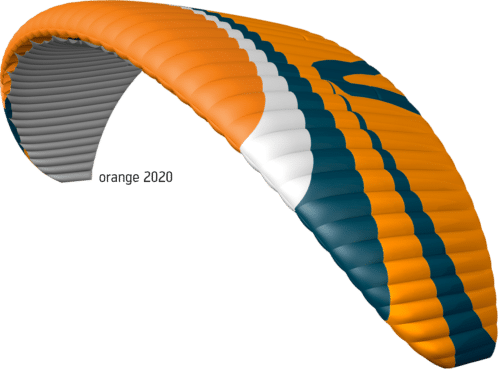
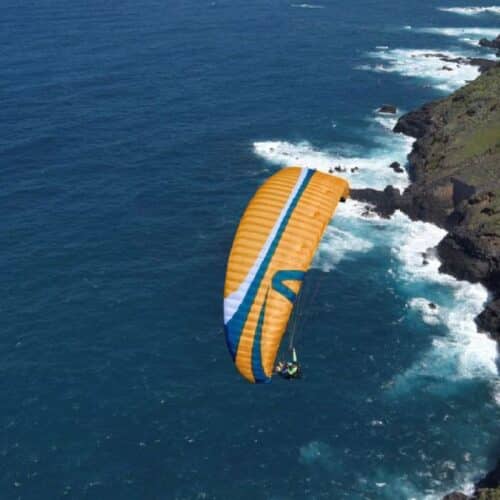



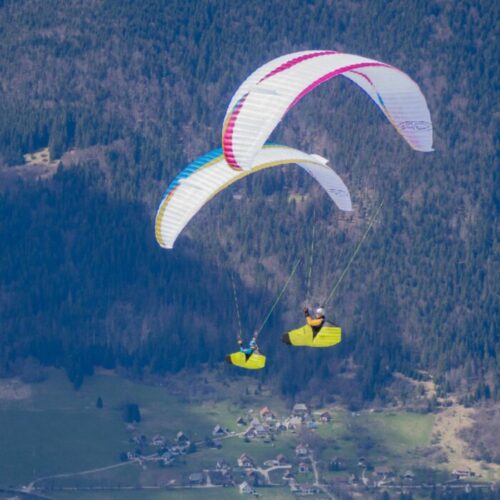
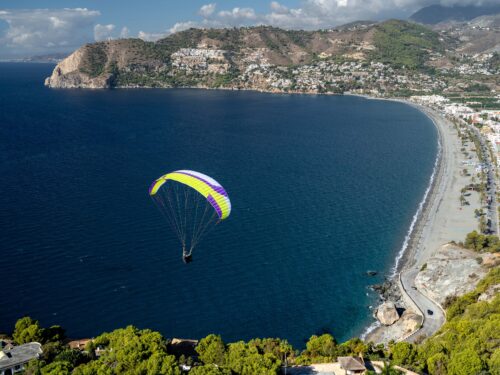
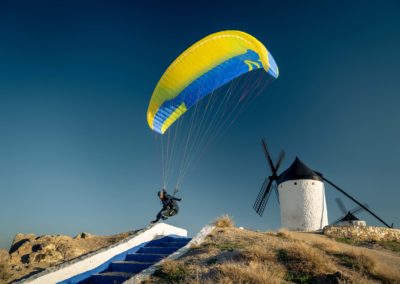
Reviews
There are no reviews yet.